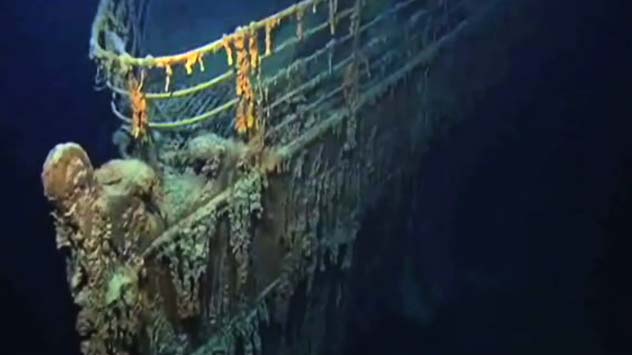Titanic vs. Lusitania: Time Determined Who Survived

The time people have during survival situations might affect whether they behave selfishly or socially. Examining two shipwrecks, the Titanic and the Lusitania, researchers recently found the longer passengers had to react to the disaster, the more likely they were to follow social mores. The less time, the more selfishly passengers behaved.
The result: It was every man for himself aboard the rapidly sinking Lusitania, and so the fittest were the most likely to survive that accident. During the lengthy Titanic shipwreck, women in their reproductive years were the most likely to make it, while men of the same age had a lower probability of surviving.
"Maritime disasters had never been analyzed in such a comparative manner before," said researcher Benno Torgler, a professor at the Queensland University of Technology. "Deriving information on how humans behave in life-and-death situations is fascinating, as individuals' true preferences are revealed." [See Stunning Photos of the Titanic Shipwreck]
The two British ships sank within about three years of each other and carried passenger loads that were similar in age, gender and economic structure (ticket price was used to indicate social status).
Overall, the chance for survival for people aboard both shipwrecks was about 30 percent.
Despite both captains issuing woman-and-children-first evacuation orders, the types of people who survived the sinkings varied greatly on each liner.
Survival of the fittest?
Sign up for the Live Science daily newsletter now
Get the world’s most fascinating discoveries delivered straight to your inbox.
The Titanic sank two hours and 40 minutes after striking an iceberg in 1912. Of the 2,207 passengers and crew onboard, 619 survived. Women, children, and those accompanying children were more likely to obtain places on lifeboats than other groups. First-class travelers, possibly better able to acquire safety information and privileges from the crew during the intervening hours, had a higher chance of surviving over third-class passengers.
Hollywood couldn't concoct a story more intriguing than that of the Titanic. With many details of the sinking still shrouded in mystery, we test your knowledge of what really went down the night of April 14, 1912.
Titanic Quiz: Fact or Fiction

On both ships, there was limited availability of lifeboats. The "unsinkable" Titanic contained lifeboats for only about half its passengers. Soon after the torpedo hit the Lusitania, the ship tipped heavily to one side. This rendered half of the lifeboats difficult to board (they swung too far from the deck) and the other half difficult to launch, as they hovered too far into the ship.
The ability to get to a Lusitania lifeboat, remain on it, and launch the boat successfully — or to tread water until rescued — influenced a person's outcome much more so than on the Titanic. With the increased time pressure, the researchers conclude pro-social behavior could not compete with self-preservation instincts, survival of the fittest won out over community spirit.
Fight or Flight
Biology may partially explain the disparate behavioral patterns on the ships.
The Titanic's prolonged plunge allowed people to follow the accepted social protocols, even when knowing it was to their own detriment.
"These events demonstrate that behavior of individuals in disaster events does not follow the traditional mythology of mass panic," Torgler said. "Behavior is neither random nor inexplicable."
The study is published today in the Proceedings of the National Academy of Sciences.
Follow LiveScience @livescience, Facebook & Google+.









